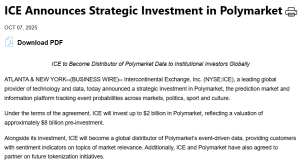Will ERC-8004 repeat the mistakes of account abstraction?
Author: Haotian
Last time I talked about how the x402 protocol continues the Lightning Network. Recently, while having dinner with a group of programmer friends, I was "challenged" again: Isn't x402 just the previous AA account abstraction?
The subtext is that Ethereum has been working on account abstraction for many years, investing so many resources in ERC-4337, Paymaster, and various grants and wallet service providers, but as we've seen, it has been criticized by many for being all talk and no action.
Although I don't think AA has failed, what exactly is the problem?
1. Paymaster shifts the user's gas consumption to the project team, which sounds great, but the project team's motivation to burn money on payment is very weak, and the ROI is unclear. It has undoubtedly entered a dead end in the business model. How can it survive on blood transfusions without the ability to generate its own revenue?
2. The AA account abstraction is limited to the EVM ecosystem. For example, ERC4337, Paymaster, and EntryPoint contracts are all Ethereum-specific. If you want to achieve cross-EVM ecosystem use including Solana, BTC, etc., you have to add more middleware services to realize the function. However, the problem is that the middleware services add another layer of transaction fee sharing, which makes the ROI of the business model even more challenging!
There are many complex technical issues, which I won't go into detail about, but to put it simply, AA is essentially a product of "technology for technology's sake," a work that reflects the past trend of pure research in Ethereum.
In comparison, what is the x402 protocol all about? What are the differences? Some criticize it for bringing out the ancient HTTP 402 status code, which has been around for 30 years, and playing the game of carving on gold.
But don't forget the HTTP 402 status code—this is the underlying protocol of the Internet, the common language of Web2 and Web3.
AA requires smart contracts, on-chain state, and EVM virtual machine execution, while x402 only requires an HTTP request header and can be used by any system that supports HTTP—Web2 APIs, Web3 RPCs, and even traditional payment gateways are all compatible.
This is not an optimization solution based on stacked technologies, but a "dimensional reduction attack" that simplifies the protocol layer. Instead of messing around with various compatibility, adaptation and trust methods at the application layer, it is better to first unify the standards of the upstream protocol layer.
The key point is that x402 is a naturally good cross-chain interoperability standard. As long as the agent can send HTTP requests, handle 402 responses, and complete EIP-3009 authorization (or equivalent standards of other chains), whether it is Base, Monad, Solana, Avalanche or BSC, there is no cross-chain awareness at the protocol level. It is only reflected in the single point of failure of settlement and payment. In comparison, the cost of cross-chain is much lower.
Facilitator can serve multiple chains simultaneously, and users' payment history data can be indexed uniformly. Developers can "connect" the entire ecosystem by integrating it once.
My overall impression is that AA is a sophisticated project driven by a researcher's mindset, while the x402 protocol is a pragmatic approach forced by market demand.
The question is, will ERC-8004 follow the same path as AA?
From a purely theoretical perspective, ERC-8004 is very similar to AA 2.0. It is still exclusive to EVM and requires the deployment of a three-layer registry (Identity/Reputation/Validation). Early incentives also rely heavily on external subsidies or staking. These are all pitfalls that AA has encountered. If other chains want to be compatible, they will still have to add an extra layer of trust costs.
The difference lies in the fact that, within the x402 framework, ERC-8004 is merely a tool, not a overarching standard. Other chains need to be compatible with the x402 protocol, not ERC8004.
This difference in positioning is crucial. What was AA's problem back then? It wanted to become "the sole standard for Ethereum payment experience," demanding that the entire ecosystem revolve around it: wallets had to adapt, applications had to integrate, and users had to change their habits. This kind of top-down push, without a killer application and a clear ROI, naturally couldn't succeed.
ERC-8004 is different. It doesn't need to be the main player because x402 has already solved the core problem: payment. ERC-8004 simply provides an "optional" trust layer on this already working payment network.
Moreover, ERC-8004 is riding on the coattails of x402, so it doesn't need to build its own ecosystem from scratch. x402 already has a clear business loop (Provider traffic generation, Facilitator charging), a complete technology stack (HTTP protocol + EIP-3009), and an active project ecosystem. ERC-8004 only needs to be "plug and play".
You May Also Like

Bitcoin Breaks Below $100K But Stablecoin Inflows Hint at Quiet Re-Risking

Polymarket To Provide UFC, Zuffa Boxing With Real-Time Fan Predictions
